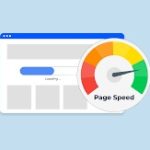Your website is more than just an online brochure. It serves as a 24/7 salesperson, a marketing hub, and the core of your online presence. However, having a merely existing website is no longer enough; you need one that converts visitors into customers. To achieve high conversion rates, every aspect of your web design and web development must work seamlessly together to provide an exceptional user experience.
Effective web development goes beyond aesthetics; it involves a strategic approach that combines web by design principles, search engine optimization (SEO), performance, and user-centric functionality. A skilled web designer can elevate your web presence, ensuring your brand stands out with a visually appealing and user-friendly site.
This comprehensive guide will explore how strategic web development can drastically improve conversion rates, turn visitors into loyal customers, and help your business thrive.
Why Conversion Rates Matter
Conversion rates are the percentage of visitors to your website who take the desired action, whether it’s making a purchase, signing up for a newsletter, or filling out a contact form. A high conversion rate indicates that your website is performing well and meeting the needs of your target audience.
Low conversion rates, on the other hand, suggest that something in your web design, user experience, or overall web development is failing. Even if you drive significant site traffic, this can result in lost revenue and fewer leads.
By improving web design, optimizing user experience, and implementing effective SEO strategies, you can boost your website’s performance, drive more conversions, and ultimately help more clients and your business thrive.
The Significance of High Conversion Rates
Simply put, a conversion rate is the percentage of visitors to your site who take the desired action. This action could be anything from purchasing, filling out a contact form, signing up for a newsletter, or downloading an e-book. Your conversion rate directly to user behavior and indicates how effective your website is at turning visitors into customers.
High conversion rates are essential for several reasons:
- Revenue Growth: Higher conversion rates mean more sales, signups, or leads, directly impacting your bottom line.
- Cost Efficiency: Increased conversions mean you’re getting more value out of your existing traffic, reducing the need for additional spending on online marketing or paid advertising.
- Improved User Experience: Websites that convert well are usually optimized for a seamless user experience, meaning visitors can easily find what they need and take action.

The Role of Web Development in Increasing Conversion Rates
Effective web development plays a central role in increasing conversion rates by creating a fast, responsive, user-friendly, and SEO-optimized website. Let’s explore some key elements of web development that directly impact conversion rates.
1. Responsive Web Design for Mobile Devices
One of the most critical aspects of modern web design is ensuring your website is responsive across all devices, especially mobile devices. With more than half of web traffic from mobile users, having a mobile-friendly website is crucial. If your website doesn’t function well on smaller screens, users will likely leave, leading to higher bounce rates and missed opportunities for conversion.
With responsive web design, your website will instantly change to fit different screen sizes, so users on desktops, tablets, and smartphones will all have the same great experience. Mobile optimization is no longer a choice; it’s a must to increase sales and improve the user experience.
2. Seamless User Experience (UX)
User experience (UX) is fundamental to any successful website design. When users land on your site, they should be able to navigate through the pages easily and find what they need without confusion or delay. Creating a seamless user experience starts with intuitive information architecture—the structure of your website’s content.
Users want to feel confident that they can quickly locate what they’re looking for, whether it’s product information, pricing, or contact details. You can reduce bounce rates and increase conversions by prioritizing user-friendly navigation, clear calls-to-action (CTAs), and fast load times.
3. Website Performance and Speed Optimization
Page load time is one of the most significant factors affecting user behavior and conversion rates. A slow-loading website can discourage visitors, causing them to leave before seeing your offerings. Research shows that even a one-second delay in load time can lead to a 7% reduction in conversions.
Optimizing website performance by minimizing image sizes, using efficient programming languages, and employing content delivery networks (CDNs) can help you achieve faster website load times. Web developers should focus on creating websites optimized for speed without compromising quality.
4. Search Engine Optimization (SEO) for Better Visibility
Your website’s ability to convert visitors into customers depends heavily on whether they can find your site in the first place. This is where search engine optimization (SEO) comes in. A well-structured, seo optimized website ranks higher on search engines like Google, driving more organic traffic to your site.
When web designers and developers collaborate to build an SEO-optimized website, it’s not just about adding keywords. They must also ensure fast page loading times, use clean code, create SEO-friendly URLs, and implement proper metadata. Optimized websites rank higher on search engines, attract more visitors, and increase the likelihood of conversions.
5. Creating Engaging and Relevant Content
Engaging content that resonates with your target audience is critical for boosting conversions. When your content aligns with your audience’s needs and pain points, they are more likely to engage with it and take action. High-quality content includes well-written blog posts, informative landing pages, product descriptions, and FAQs that address common customer questions.
Ensure your content includes clear CTAs that guide visitors toward the next step, whether it’s making a purchase, signing up for a free trial, or contacting your business. Web development and web design should integrate content seamlessly to create an experience that leads users toward conversion.
6. Strong Visual Appeal and Consistent Branding
First impressions matter. Your website’s visual appeal is one of the first things users notice, and it plays a huge role in forming their first impression and opinions about your business. A well-designed website with an attractive layout, cohesive color scheme, and professional graphic design elements can instill trust in visitors and encourage them to explore further.
Your website should also reflect your brand’s unique identity and reinforce your brand authority. From your logo design to the use of consistent fonts, colors, and messaging, strong branding helps users recognize and remember your business. A web design agency that understands your vision can take creative ideas and help create websites that elevate your brand image and enhance brand visibility.
Web Development Tactics to Drive Conversions
Beyond the essential elements mentioned above, specific web development tactics can help you directly improve conversion rates. Whether building a new website or updating an existing one, the following strategies can set you up for success.
1. Simple and Clear Calls-to-Action (CTAs)
One of the most effective ways to drive traffic and increase conversions is by using clear and compelling CTAs. Every page on your website should have a specific purpose and guide users toward an action, whether purchasing, signing up for a newsletter, or scheduling a consultation.
Ensure that CTAs are prominently displayed and easy to understand. Use actionable language such as “Get Started,” “Buy Now,” or “Contact Us Today” to encourage immediate action. Additionally, place CTAs in multiple page areas, such as at the top, middle, and end, so users are continually reminded of their next step.
2. Reducing Friction in the Conversion Process
Friction refers to any obstacles or delays that prevent users from converting. Common friction points include lengthy forms, complicated checkout processes, or confusing navigation. By streamlining these processes, you can reduce friction and increase conversions.
For example best in class first, an e-commerce site should offer a fast, simple checkout process with minimal form fields. Additionally, offering multiple payment methods and guest checkout options can remove barriers and make it easier for customers to complete their purchases.
3. A/B Testing for Continuous Improvement
A/B testing is a powerful way to identify what works and what doesn’t on your website. You can determine which variations drive more conversions by testing different versions of key elements, such as CTAs, headlines, or landing page layouts.
Work with your web design agency or developers to set up A/B tests and monitor performance. Over time, continuous testing and optimization will result in a new website that converts much faster.
4. Incorporating Social Proof
Socially relevant proof, such as customer testimonials, reviews, or case studies, can build trust with potential clients. When users see that others have had a positive experience with your business, they are more likely to take the plunge themselves.
Displaying user-generated content, such as reviews or customer photos, can further enhance credibility. Web designers can create dedicated spaces where social proof is prominently featured, such as on your homepage or product pages.
5. Creating a Sense of Urgency
Another effective tactic for increasing conversions is creating a sense of urgency. Limited-time offers countdown timers and stock availability indicators can motivate users to act quickly instead of delaying their decisions. For instance, including phrases like “Only two left in stock!” or “Offer expires in 24 hours!” encourages visitors to complete their purchase before they miss out.
Leveraging Web Design Services to Enhance Conversions
When partnering with a web design company, it’s important to ensure they offer a comprehensive range of web design services that directly contribute to boosting conversions. Here are some web design services that can make a significant impact on your conversion rates:
1. Website Redesign
If your existing website is outdated, slow, or difficult to navigate, a website redesign can breathe new life into your online presence. A modern, well-optimized site designed with user experience in mind will improve engagement and encourage conversions. A redesign can address technical issues, improve mobile responsiveness, and enhance your site’s performance.
2. SEO Optimization
Search engine optimization is critical for driving organic traffic to your website. A web design agency that offers SEO-optimized websites ensures that your site ranks well in search results, making it easier for potential customers to find you. SEO isn’t just about keywords but includes on-page optimization, technical SEO services, and content optimization.
3. Graphic Design and Visual Storytelling
Compelling visuals are a key component of any successful website. Professional graphic design enhances the visual appeal of your site and can help tell your brand’s story in a way that resonates with your audience. From infographics to custom illustrations, strong visual elements in logo design can guide users through your website and toward conversion.
4. Social Media and Email Marketing Integration
Effective web development should also incorporate integration with your broader online marketing efforts, including social media and email marketing. For example, embedding social media feeds on your website or integrating lead generation forms for your email list can help keep visitors engaged with your brand, even after they leave your site.
5. E-commerce Solutions
For businesses that sell products or services online, robust e-commerce solutions are essential. A well-designed e-commerce site should offer a seamless shopping experience, from browsing products to completing checkout. By incorporating features such as secure payment gateways, inventory management systems, and mobile-friendly design, your website can cater to a wide range of customer needs and preferences.
Working with the Best Web Designers to Maximize Your Conversion Rates
To achieve the best results, it is essential to work with web designers and developers who are well-versed in creating conversion-driven websites. Whether you are starting a project from scratch or looking to improve an existing website, the right team can help you achieve your business goals.
Why Choose LinkLumin?
At LinkLumin, we specialize in creating exceptional digital experiences that drive conversions and help your business thrive. Our expert team of web designers, web developers, and SEO specialists work closely with clients and you to understand your unique needs and develop a customized strategy tailored to your business.
We offer various web design services, from responsive web design and website redesigns to SEO optimization and e-commerce development projects. Our commitment to meticulous attention to detail and delivering best-in-class websites ensures that your site looks stunning and performs at the highest level.
How Digital Marketing and Web Development Work Together for Higher Conversions
Web development doesn’t exist in a vacuum. It should complement your broader digital marketing strategies, such as email marketing, social media campaigns, and content marketing. A well-rounded digital marketing approach can increase traffic, and when paired with strong web design, it can boost conversion rates. Here’s how to tie them together:
1. Integrating Social Media
Your website should seamlessly integrate with your social media profiles, allowing visitors to engage with your brand across platforms. Incorporating social sharing buttons and embedding live social feeds can help promote your content and encourage engagement. Web development teams can also add social login options, making it easier for users to sign up or log into your site using their social media accounts.
2. Utilizing Email Marketing Integration
A well-designed website should include elements that complement your email marketing campaigns, such as signup forms, newsletter subscription CTAs, and gated content (e.g., downloadable guides in exchange for email addresses). A web design agency that offers email marketing integration ensures that your website becomes a tool for growing your mailing list and nurturing leads.
3. Conversion-Focused Landing Pages
When running paid ads or digital campaigns, ensure your landing pages are optimized to convert visitors. This is where web development intersects with online marketing—ensuring that your landing pages provide clear messaging, strong CTAs, and a streamlined path to conversion. Whether your campaign involves Google Ads, social media advertising, or content marketing, your website’s development team should create landing pages that align with the campaign’s goals.
Building Trust Through Security and Transparency
Building trust is crucial for conversions, particularly e-commerce websites in today’s digital landscape. Users want to feel confident that their personal information is secure, especially when purchasing. Here are some ways your web development team can enhance trust:
SSL Certificates and Security Features
If your website involves transactions or the collection of personal information, an SSL certificate is mandatory. SSL encryption protects sensitive data and reassures users that their information is safe. To increase user confidence, web designers should also implement other security features, such as secure payment gateways and two-factor authentication.
Transparent Communication
Trust also comes from transparency. A website should display contact information, return policies, and privacy policies to demonstrate that your business operates with integrity. Web development should ensure these sections are easy to find and access.
Customer Reviews and Social Proof
Incorporating customer reviews and testimonials on your site provides social proof and builds your brand and credibility with potential clients. Web developers can integrate third-party review platforms or allow users to submit reviews directly. Positive testimonials, reviews, and case studies motivate potential clients to engage with your brand.

The Long-Term Benefits of Investing in Web Development
Investing in high-quality web development is not just about improving conversion rates in the short and long term relationships however; it’s about setting your business up for long-term success. Here are some of the long-term benefits:
- Scalability: A well-developed website is easier to scale as your business grows. Whether you need to add new services, expand into new markets, or upgrade functionalities, a solid website foundation will support your evolving needs.
- Brand Authority: A professionally designed website helps build your brand authority over time. It reflects your business’s professionalism, making attracting and retaining potential clients easier.
- Ongoing SEO Benefits: Effective search engine optimization doesn’t just help in the short term. You’ll continue to benefit from organic traffic and higher search rankings by continuously optimizing your website’s content and performance.
Conclusion
Boosting conversion rates with effective web development is essential for long-term business success. By creating a seamless user experience, improving website performance, optimizing for SEO, and incorporating powerful CTAs, your website can become a high-performing sales tool that drives more leads and generates more revenue.
At LinkLumin, we are passionate about helping businesses achieve their full potential through strategic web development tools and design services. Contact us today to learn how we can help you create a website that converts visitors into loyal customers and propels your business forward.
Tags




